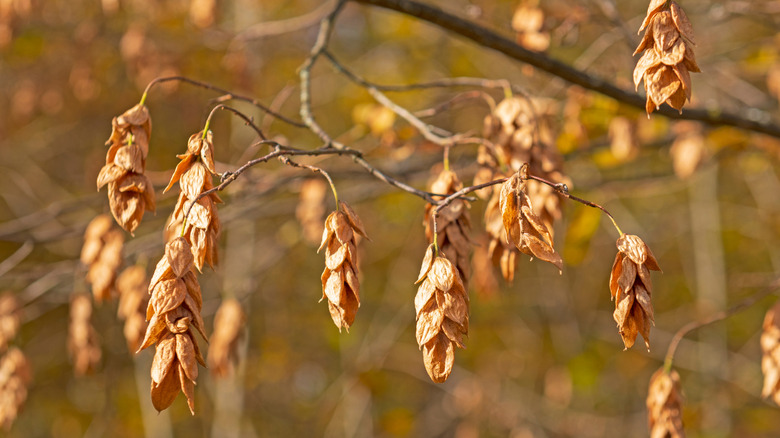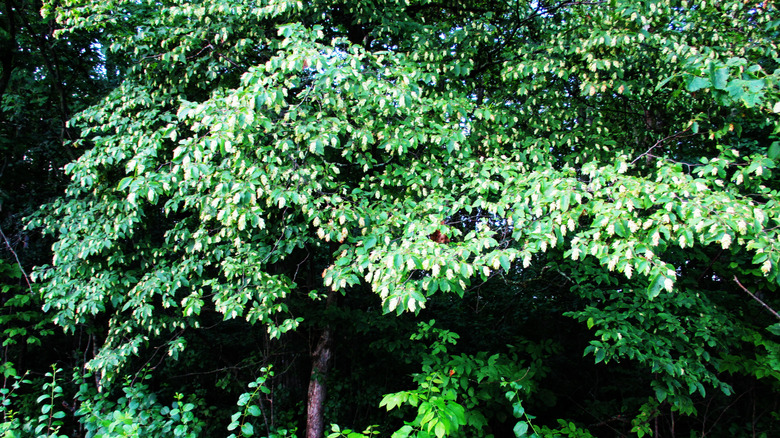The Easy-To-Grow Tree You Can Plant In Fall That Wildlife Will Flock To During Winter
Now that fall is here and the temperatures are beginning to drop, you might be convinced that it's too late in the year to plant trees for a bird-friendly winter habitat. Well, think again. There are a number of trees you can grow now that will keep wildlife coming to your garden or yard in the colder months. Case in point: Ironwood, or America hop-hornbeam (Ostrya virginiana), a native perennial tree that's as easy on the eyes as it is to grow. The common name ironwood is actually an umbrella term for hardwood trees with tough, decay-resistant wood. This tree in particular boasts elegant, droopy branches and hop-like fruits, which are some of the many reasons why critters flock to it.
Songbirds, wild turkeys, squirrels, and mice can all be found munching on ironwood's seeds, nutlets, and buds or taking shelter under its foliage. Deer have been known to graze on its leaves and twigs in the winter when other sources of food are scarce. Owls like ironwood, too, and occasionally build their nests on them.
Ironwood's slender stature and shaggy bark bear a resemblance to birch trees (Betula spp.), which are from the same plant family. It's hardy in USDA Hardiness Zones 3 through 9 and, as its nickname suggests, so durable that its wood is sometimes used to build fence posts or make handles for gardening tools. By planting ironwood, you'll keep your garden looking interesting well into the winter and attract wildlife year-round.
How to plant and care for ironwood trees
Balled-and-burlapped ironwood trees can be planted successfully in the spring or fall. Consider growing it as a shade tree in your backyard or to add some visual interest to a woodland garden that's otherwise lifeless in the winter. Though this tree is easy to grow, it can be finicky before it's established. Transplant yours carefully, ensuring that you don't lift it from the top. And don't expect it to shoot up in size right away. Ironwood is considered a slow-grower.
This tree does best in moist, well-drained soil that's rich in organic matter, though it can tolerate some dryness. (It might be worth testing your garden soil quality before you plant it this fall.) Then, choose an area on your property that gets full sun to partial shade. Mature ironwood trees can reach up to 20 to 40 feet in height, so plant yours in a spot where it has plenty of room to grow. Watch out for areas that get heavily salted in the winter, too. That can be detrimental to these trees.
Once it's taken root, ironwood is pretty low-maintenance. It's foliage is also naturally deer-resistant and drought-tolerant, making this tree a safe bet for gardeners in a variety of settings and climates. To support its continued growth, keep its soil adequately moist, and prune it lightly in the winter months or early springtime before new growth appears. That way, you can keep enjoying ironwood's gorgeous, color-changing foliage — and the wide range of wildlife it attracts — for years to come.

